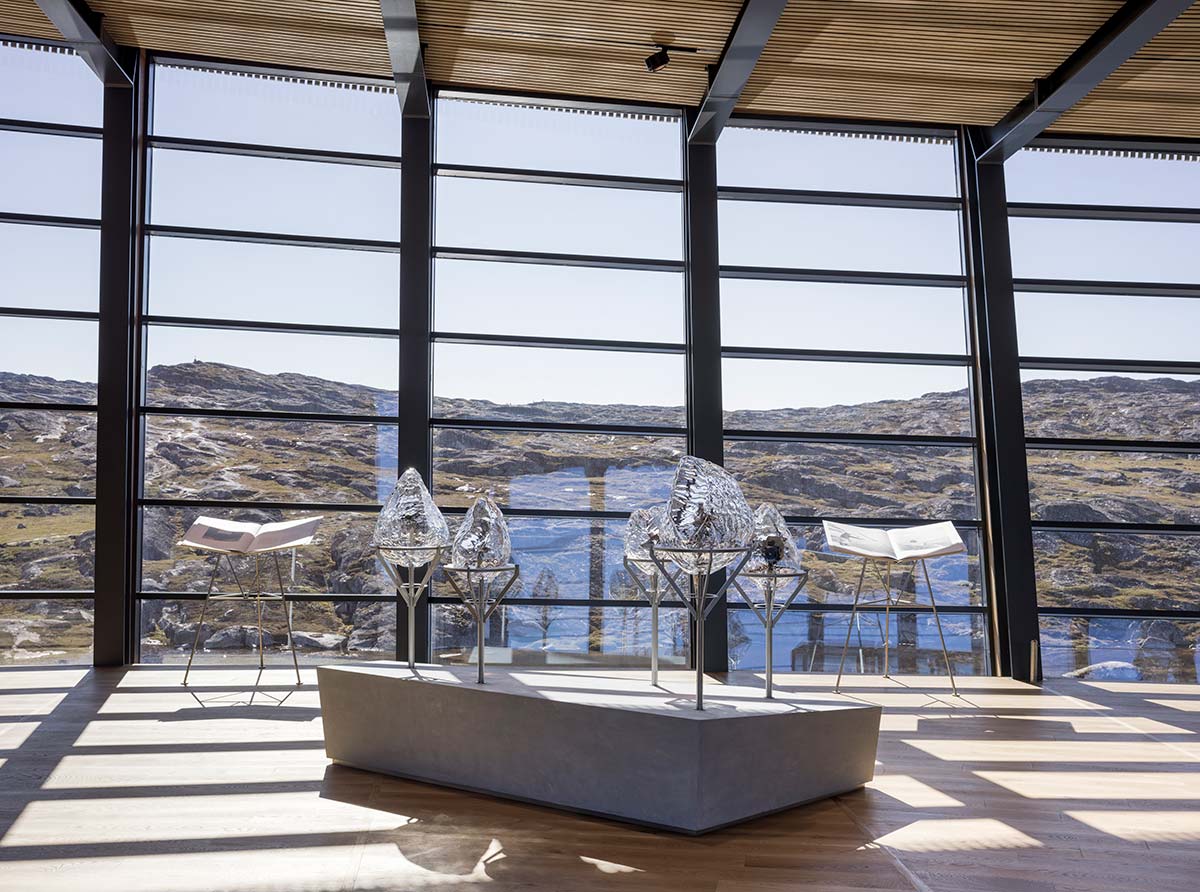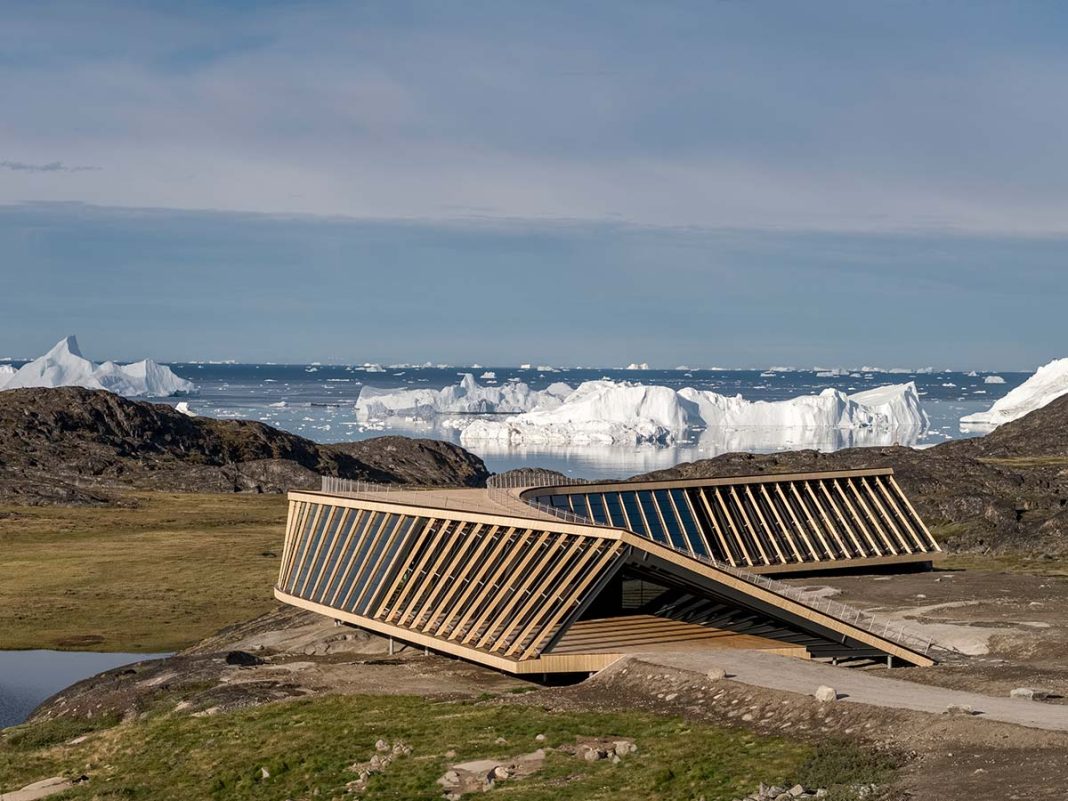DATA SHEET
Client: Realdania, Avannaata Kommunia and the government of Greenland (Naalakkersuisut)
Architect: Dorte Mandrup
Landscape design: Kristine Jensen. Landscape & Architecture
Engineer: Søren Jensen Rådgivende Ingeniørfirma
Exhibition design: JAC Studios
Lighting design: Fortheloveoflight
Photo credits: Adam Mørk
The architecture is completely integrated into nature and is also at its service. The new Ilulissat Icefjord Center, a visitor center on the Kangia Fjord on the west coast of Greenland, 250 km north of the Arctic Circle, has this dual quality. Its fits into the harsh, pristine landscape with its atypical configuration, following the landscape’s gentle slope and infinite horizontal expanses. In the broader context, its presence is discreet, almost silent if not for the building’s powerful resonance as more than a mere place for gathering or shelter but a place to experience the effects of climate change.
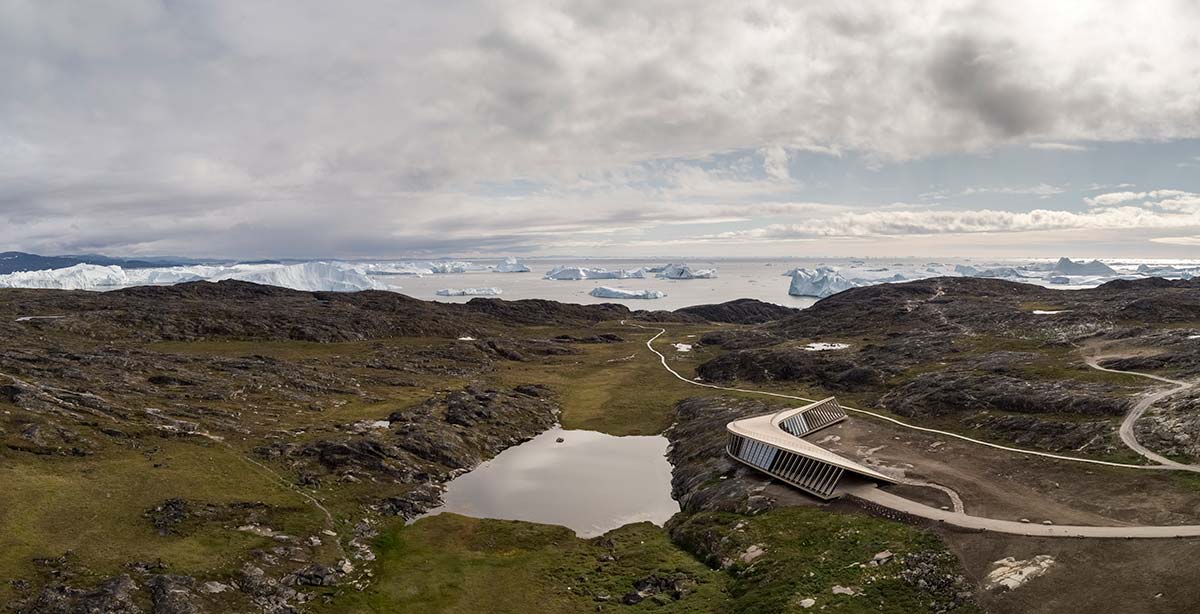
The Icefjord Center is near the town of Ilulissat, on the mouth of the Kangia Fjord (a UNESCO World Heritage Site since 2004), which is dotted by the massive icebergs of Sermeq Kujalleq – among the fastest and most active glaciers in the world — making their way to Disko Bay. Giving us special access to this vision of genuine, wild nature, the center becomes a bridge between the city and the landscape. This was the guiding idea for the Copenhagen-based Dorte Mandrup, the studio that designed the project, reputed for making architecture on world heritage sites.


The studio’s founder describes its structure as “a snowy owl’s flight through the landscape,” for its aerodynamic, lightweight structure appearing to levitate over the ground. This concept’s purpose is primarily functional to avoid disturbing nature and its course. The structure (measuring just under 1,500 square meters) is made up of 50 steel load-bearing frames that gradually rotate to form a boomerang shape on the ground with increasing slopes on the sides that prevent the accumulation of snow and let the wind sweep it away from the facade; in the spring, when the snow melts, the water from the thaw can also easily flow on a path below the building, made possible by the slightly raised volume, towards the adjacent Sermermiut Lake.
The visible twist that results from the roof’s arrangement is a conceptual continuation of the hiking trails in the surroundings, which are freely accessible to observe the fjord before actually venturing inside; there are two access points to the center at its ends, to the east and west, both covered and serving as shelters as well as gathering places.
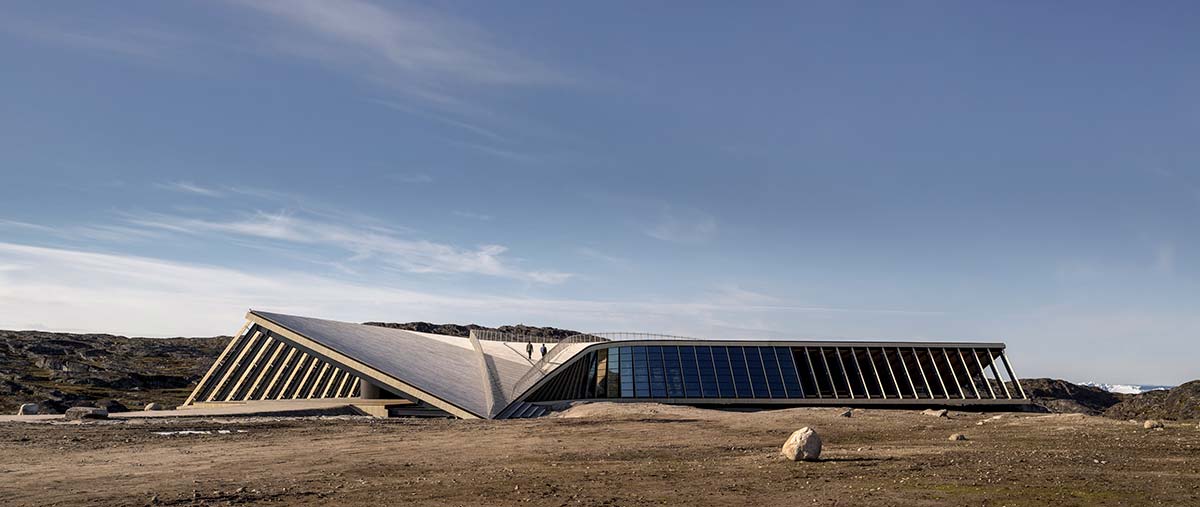
The actual visitor center is in the center of the building and is open year-round. An area for exhibitions is supported by a film room, a café and a shop as well as research and training facilities. The intended users are not only but tourists but also locals, politicians, firms and researchers who can learn here about the history of ice (including through a permanent exhibition conceived by JAC Studios), and tied by the history of evolution, directly experiencing the oldest rock in the world, that of Greenland.
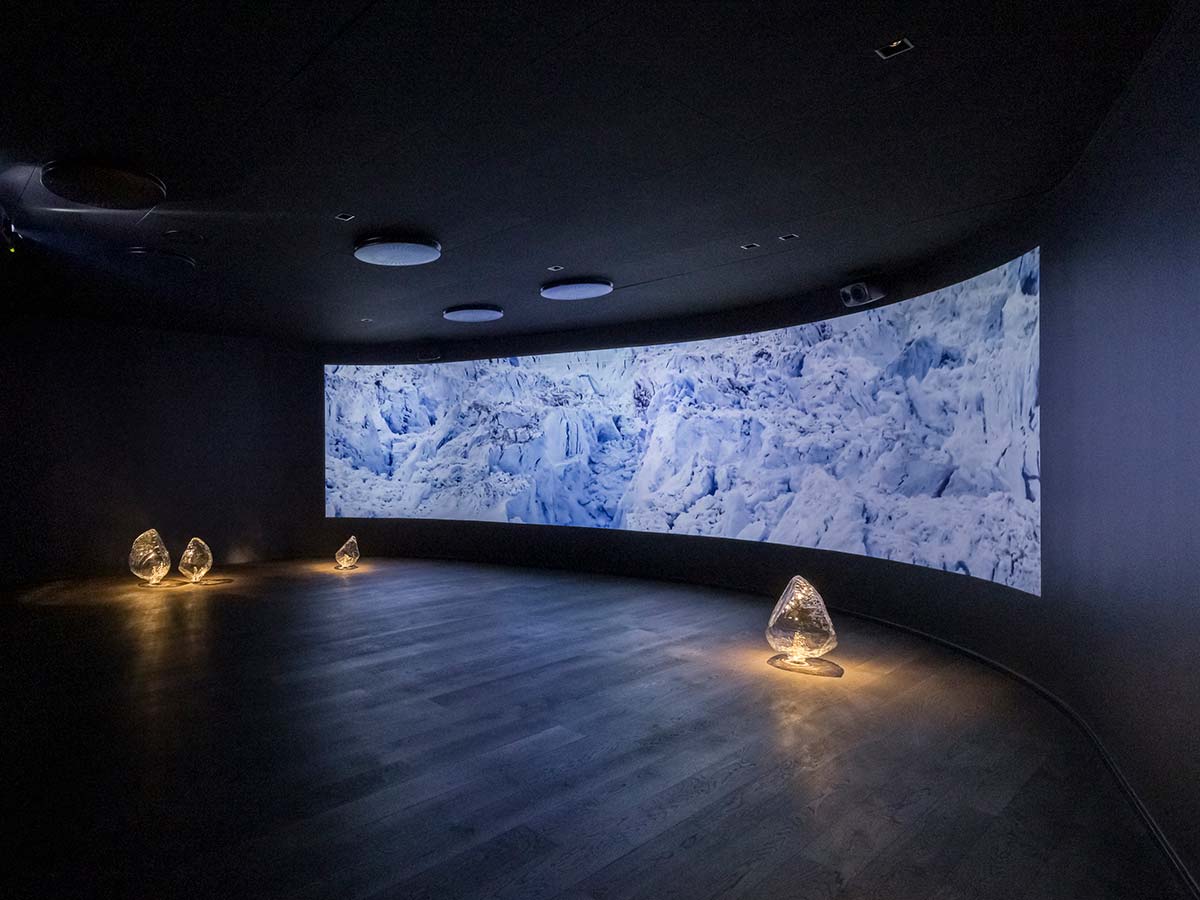

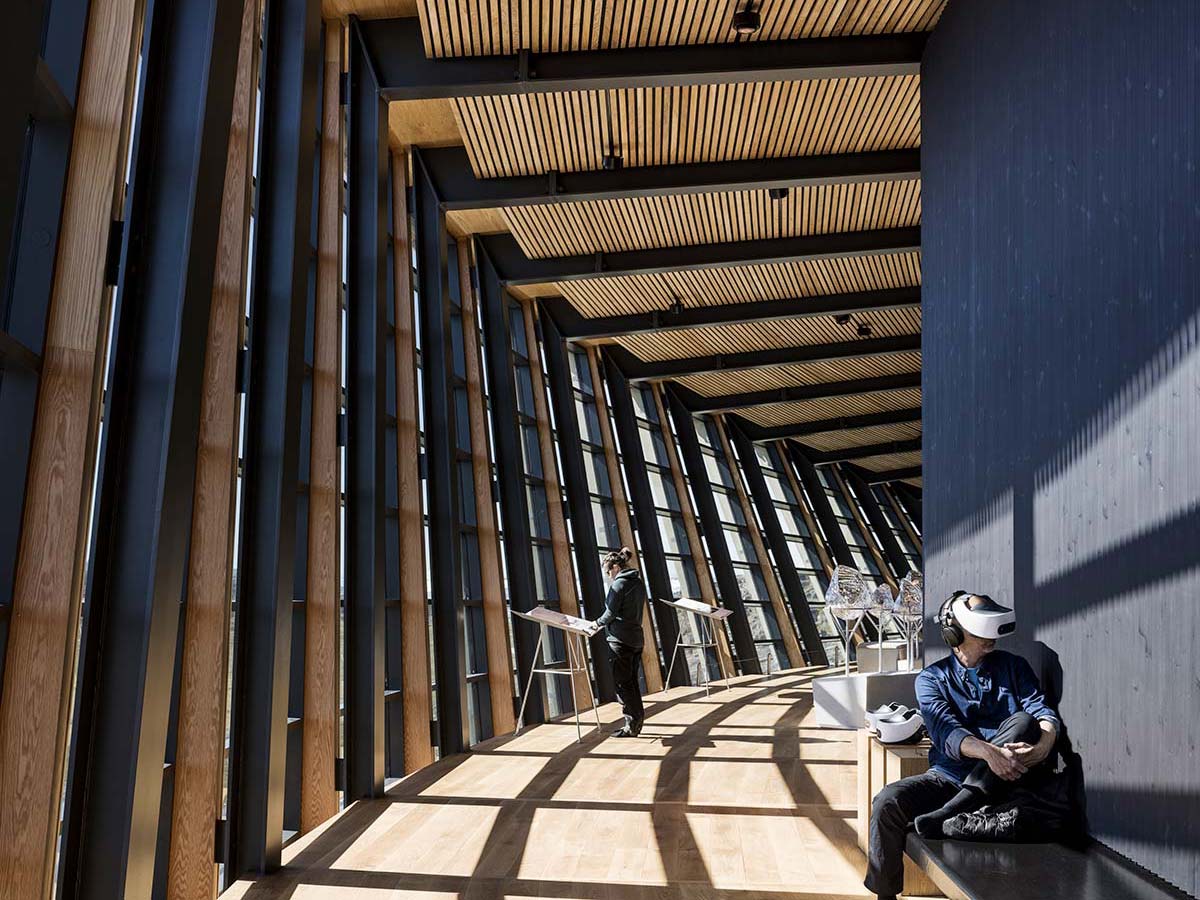
No less significantly, from here we can directly perceive the consequences of climate change on the arctic landscape. One of Dorte Mandrup’s goals was to remark the “fleeting” presence of this building (and humanity at large) compared to the ancient solidity of the nature around it. This was done through a design with a low environmental impact along with the careful use of materials, which are also sustainable, mainly oak wood and steel, and the minimal use of cement.
“The Icefjord Center offers a refuge in the dramatic landscape and aims to become a natural gathering point from which you can experience the infinite, non-human scale of the Arctic wilderness, the transition between darkness and light, the midnight sun, and the Northern lights dancing across the sky,” says Dorte Mandrup.
